This is the transcript for Book Two, episode 1 of The Lion and the Sun podcast: A New Dynasty. This story is about Reza khan’s efforts to end of Qajar rule after more than a century and the new dynasty that takes its place. Listen to this episode on Apple Podcasts, Spotify or all other podcast platforms.
The King Who Lost Everything
In the twilight of dawn, the world was neither awake nor asleep. The winter weather was cold. July was always one of the driest months in Johannesburg, South Africa
In Parktown, people’s heads were visible from the windows and some had even taken to the street. The sun wouldn’t rise for another hour, yet the commotion outside made the residents curious.
An ambulance sat parked in front of one of the larger houses on the block. The medics were urgently attending to the unit’s resident.
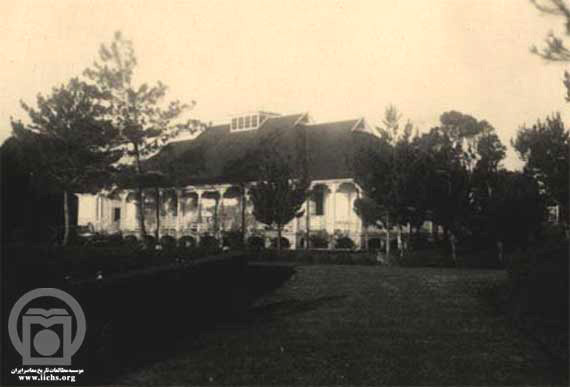
The locals barely knew the old man who lived there. He was rarely seen, a mystery figure who sometimes walked around his yard and rarely got out of the house. The man didn’t speak to the people living there, as if he couldn’t even understand their language. The sound of his heavy, military boots occasionally echoed through the quiet streets, a reminder of his presence. He never had any visitors either … except for his doctor.
A True Outsider
This isolation fueled the curiosity of the Parktown residents. It sparked a wave of rumours about the mysterious old man living on their block.
Some claimed he had been a military officer, a lieutenant who crushed rebellions and commanded armies. Others whispered that he was a hero who had saved his country. A few believed him to be a ruthless dictator responsible for betraying his allies. Some regarded him as a nationalist who had dedicated his life to rebuilding his homeland. But no one really knew.
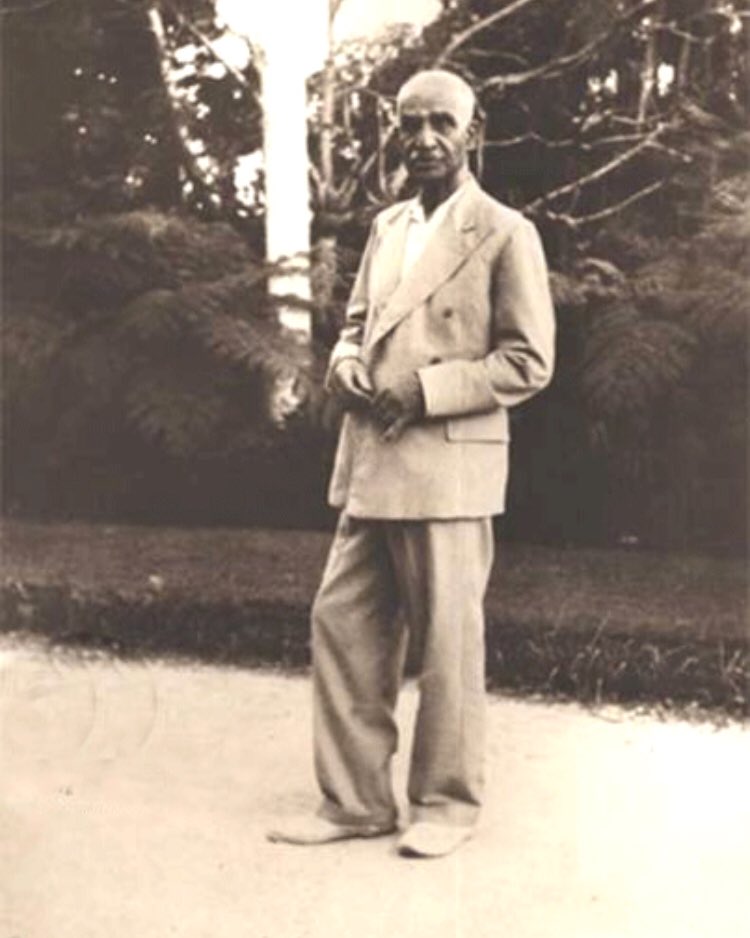
He often walked alone, muttering about his suffering and the injustice that had been inflicted upon him. His body was wracked with pain, and his heart seemed burdened by a weight too heavy to bear.
But none of that mattered now. There was little the doctors could do.
At 6:00 a.m. on July 26th, 1944, the people of Parktown gathered to witness their mysterious neighbour for the last time.
As the ambulance carried the body away, whispers rose in the cold morning air.
Whispers about the man who had once been a simple soldier, rising to become the prime minister of an empire. The prime minister who had overthrown a century-old dynasty to establish a kingdom in his own name.
Reza Shah of the House of Pahlavi. Exiled from his homeland. Destined to die far from the country he had once ruled. Alone and forgotten.
A Triumphant Return: Iran After Liberation of Khuzestan
Twenty years before the solemn morning of 1944 and on January 1st, 1924, the streets of Tehran felt like ancient Rome.
The crowd were gathered to welcome the triumphant return of Reza Khan. Their new and influential prime minister had returned from a bloodless campaign in the south.
He had been able to take back control of the Khuzestan province. He had prevented it from falling into the hands of the British and the tribal leader who had controlled the land for the better part of a decade.
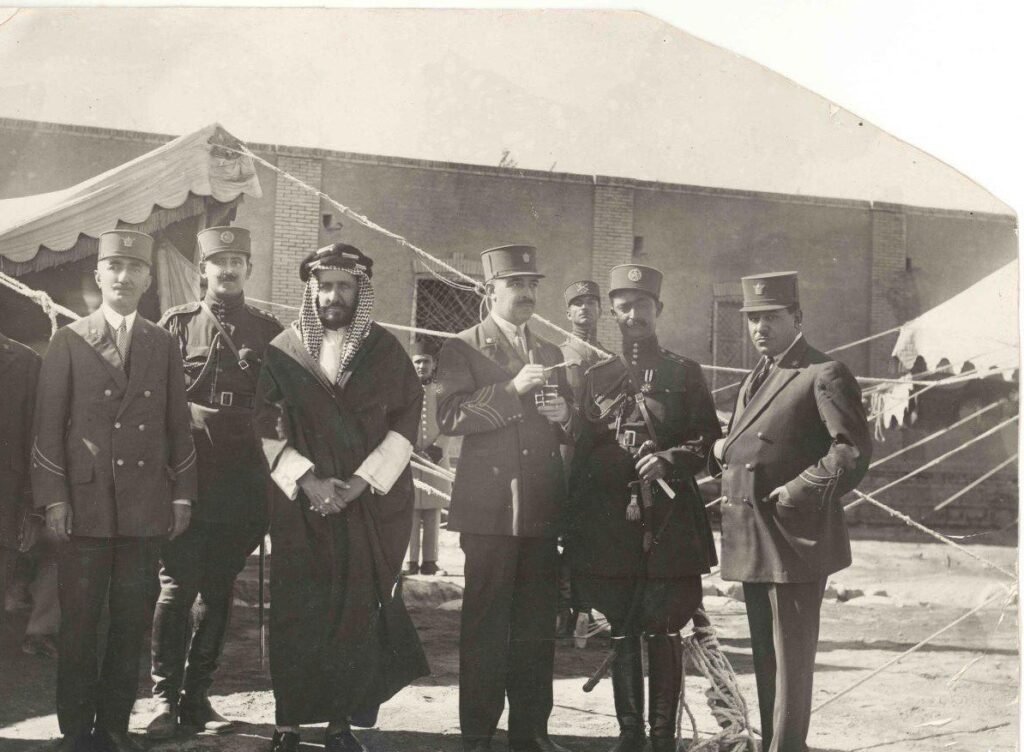
The government announced three days of celebrations with festivities in the streets, fireworks in the skies and banquets for the foreign delegates and the influential elite. Despite the undertone of propaganda, it was hard to ignore the raw joy and happiness of the people.
After years of incompetent leadership, the people finally had someone who cared about Iran and its people.
Someone who took action against injustice and stood up to the threats facing the country. The people were so enamoured by their prime minister, that they couldn’t even remember that just a few months back, they called for his removal in the streets.
From Soldier to Prime Minister: The Rise of Reza Khan
Despite his modest beginnings, Reza Khan proved to be a shrewd political operator who understood the power of public perception. Rising from a peasant family, he had climbed the ranks to become a colonel in the Cossack Brigade. In the aftermath of World War I, with Iran devastated and in ruins, Reza Khan’s strong, commanding presence resonated with a populace desperate for stability.
The coup of 1921 marked his official entry into Iran’s political arena. Appointed Minister of War, Reza Khan gradually expanded his influence, consolidating power step by step. Positioning himself as a central figure in the country’s governance until he became the country’s prime minister in 1923.
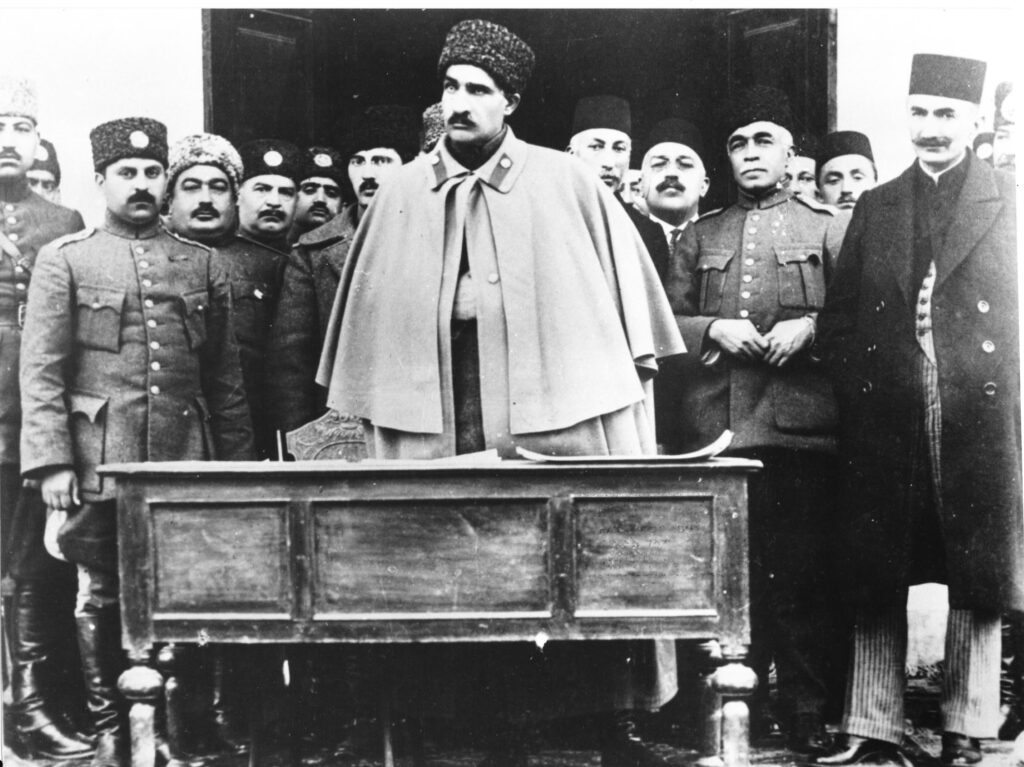
After his failed effort to turn Persia into a republic, he became more deliberate in his actions.
He now understood the influence of the clergy and made sure to maintain strong ties with Shia leaders. He knew that nationalism resonated deeply with the urban populace. So he infused it into every aspect of his public persona.
His clash with the majlis also showed him the true power of parliament. Now he was careful not to overstep its boundaries.
The Fifth Majlis: Reza Khan Gains Full Support
After the Khuzestan rebellion, no immediate dangers threatened Persia and after two decades, the country was at peace. This elevated Reza Khan’s status.
There were no rebellions, no protests and no disdain towards the prime minister. Even the fifth majlis, the legislative body that only a few months back had attempted a vote of no confidence against Reza; was fully supportive of his actions.
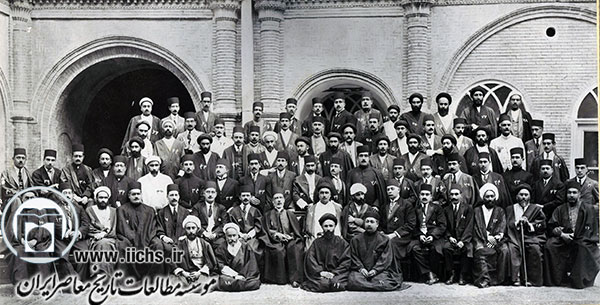
The current majlis consisted of three fractions:
- Those who fully supported Reza Khan.
- Those who supported him but preferred minor changes to his cabinet.
- A small minority who opposed Reza Khan completely.
But even that minority was careful not to overstep their reach. They all acknowledged Reza Khan’s continued service to the country but voiced concern about Reza Khan’s authoritative tendencies. They only wished that the Shah would soon return to the country. Hoping that the return of the Shah would curb Reza Khan’s ambitions and help control his thirst for power.
This minority was led by Hassan Moddares.
An Unlikely Friendship Forms
Hassan Moddares was a clergy and one of Reza Khan’s biggest critics. He was the one who defeated the move to turn Iran into a republic and the chief architect of Reza Khan’s vote of no confidence. During the fight against republicanism, Moddares was at the height of popularity and influence, an influence which has been declining ever since.
During the Khaz’al’s rebellion, Moddares had advocated for the sheikh’s autonomy and was a supporter of his in the parliament. The unpopularity of Khaz’al had eroded much of Moddares’ prestige. But he was still an influential figure in the legislative chamber.
Reza Khan knew that to make a move, he had to have the support of all parliament members and that meant courting the minority of representatives who were against him. So in a daring move, he began to court Moddaress and try to win him over.
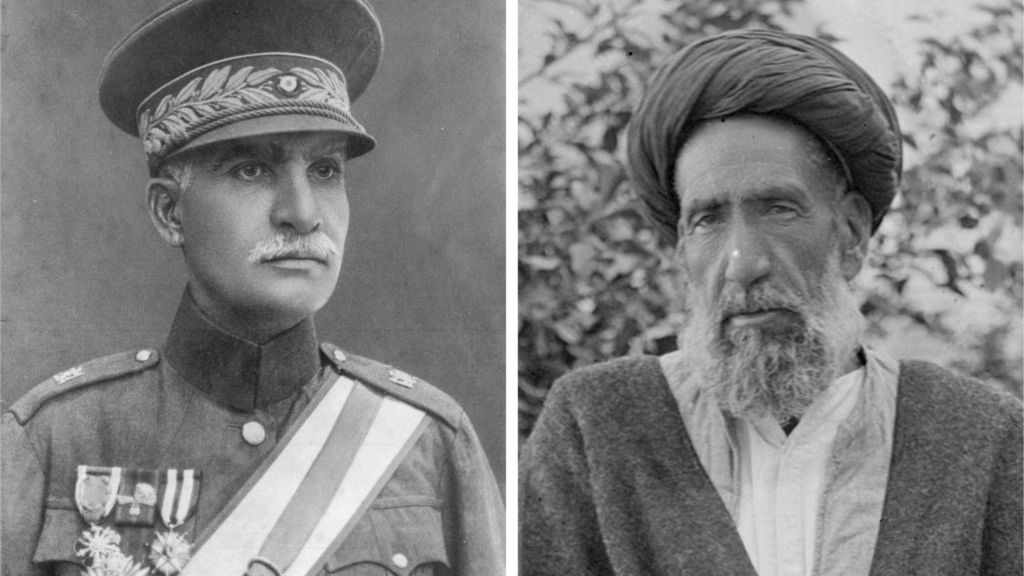
Reza Khan believed Moddares to be a pragmatic man. Seeing Moddares’ declining popularity, he knew that the clergy would be willing to do anything to pick himself back up again. And he wasn’t wrong.
From Foes to Allies: Reza Khan and Moddares Build an Alliance
From January 1925, Reza Khan and Moddares began to meet on a regular basis. Early in the mornings, before sunrise, Reza Khan would send for Moddares and a trusted assistant would bring him to his residence in the capital.
During these meetings, Reza Khan tried to make a case to Moddares and win him over. He would count the accomplishments of his government, the improvements that have been made during the turmoil of Qajar rule and the safety that was created from chaos.
Reza Khan had unified Persia’s fractured army. He had quashed the rebellion of Kuchak Khan, Sheikh Khaz’al and numerous other tribes in the region and reduced the influence of foreign governments on Iran’s soil. Reza confined to the clergy that he no longer felt confident in Shah’s ability to maintain control of the land and couldn’t work with a king who had been absent for months.
What started as animosity, slowly translated into a seemingly mutual respect. Moddares was enjoying the apparent influence he had on Reza Khan.
Reza Khan would go out of his way to cater to his needs. Whenever he wanted to travel, Reza Khan would ask for private transportation to take him to his destination. Whatever the clergy needed, Reza Khan made sure that it was provided. He was becoming an influential figure once again and the temptation of power became too great to ignore.
Reza Khan: Iran’s New Commander-in-Chief
In February 1925, Moddaress—who had been pushing for Reza Khan’s removal just months earlier—passed a law granting Reza Khan the title of Commander-in-Chief. This move elevated Reza Khan to a position of power rivaling that of the king.
This title was a huge concession to Reza Khan. The use of the “Commander-in-Chief” title, which Reza Khan had adapted for months, was not exactly legal.
According to the Persian constitution, only the reigning monarch could hold or bestow the title. However, with the Majlis now formally certifying it, Reza Khan became untouchable. Ahmad Shah could no longer dismiss him, and Reza Khan wielded near-royal authority.
For Moddares, this was a calculated strategy. In his view, by accepting the title through the Majlis, Reza Khan was acknowledging the parliament’s authority over him. Though the title granted Reza Khan king-like powers, it also reinforced the supremacy of the Majlis over the monarchy.
Reza Khan’s position now depended on parliamentary support, and the Majlis could withdraw that backing whenever it felt threatened.
Moddares also managed to extract three concessions of his own from the prime minister.
Moddares’ Qui Pro Quo: Reza Khan Three Concessions
Concession 1: New Cabinet Picks
In exchange for granting him the “commander-in-chief” title, Reza Khan agreed to bring two of Moddares’ nominees to his cabinet. The first was Shokrollah Sadri who was appointed as the minister of interior and Firouz Nosrat al-dowle, who was chosen as the minister of Justice.
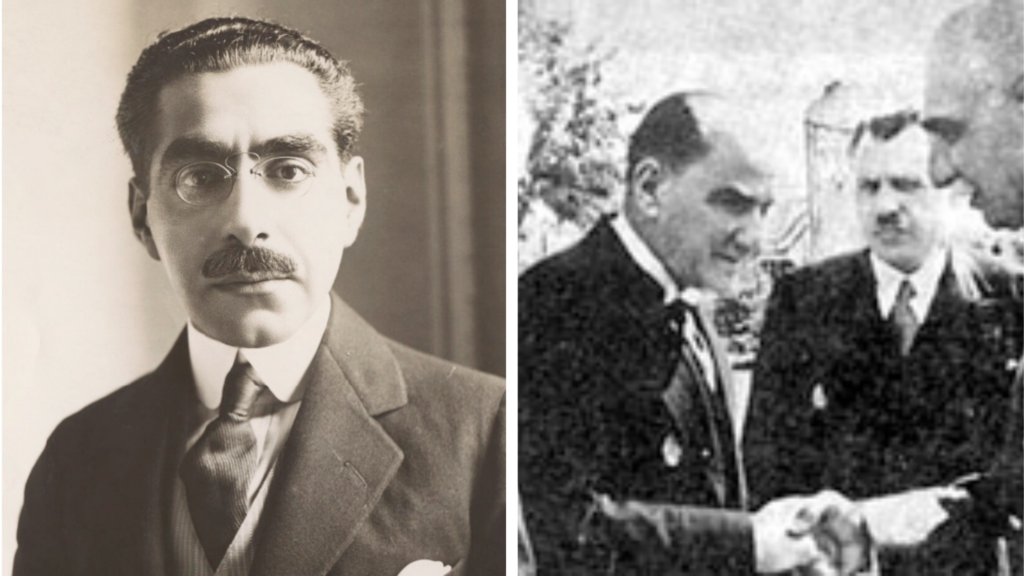
This decision led to backlash from the pro-Reza Khan fraction of the parliament. But ultimately, Reza Khan stuck to his word. While Moddares was the one to recommend Firouz, he soon became a fierce supporter of Reza Khan and played a key role in his future endeavours. A story that we will get to later on.
Concession 2: Reconnecting with the Qajars
Beyond cabinet appointments, Moddares also demanded that Reza Khan mend ties with the heir apparent, Mohammad Hassan Mirza, the brother of Ahmad Shah. During the republicanism saga, Mohammad Hassan Mirza had emerged as a rallying figure for Reza Khan’s critics, with many advocating for him to replace Ahmad Shah and limit the prime minister’s power. However, he failed to live up to these expectations.
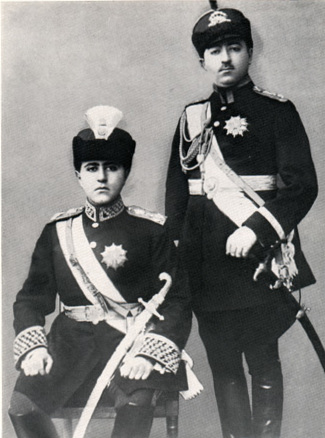
Because Mohammad Mirza was the most senior member of the Qajar family residing in the country, Reza Khan had to be in contact with him to make major decisions in Iran’s politics Yet, since Reza Khan’s return from the south, he had refused to engage with the heir, complicating matters that required royal input.
Reza Khan thought Mohammad Mirza to be a weak, uninspiring figure, but he respected the wishes of Moddares. On February 17, Reza Khan came to the parliament to thank the members for bestowing him the title and afterwards, he called the prince to rekindle the ties.
Concession 3: Return of Banished Individuals
Moddares’ third and final request was the most complex. He asked Reza Khan to facilitate the return of several prominent Iranian politicians who had been exiled. This included Seyed Zia, the journalist behind the 1921 coup; Qavam al-Saltaneh, the former prime minister whom Reza Khan had banished to consolidate power; and Ahmad Shah, who, fearing for his life, had refused to return from his stay in Europe.
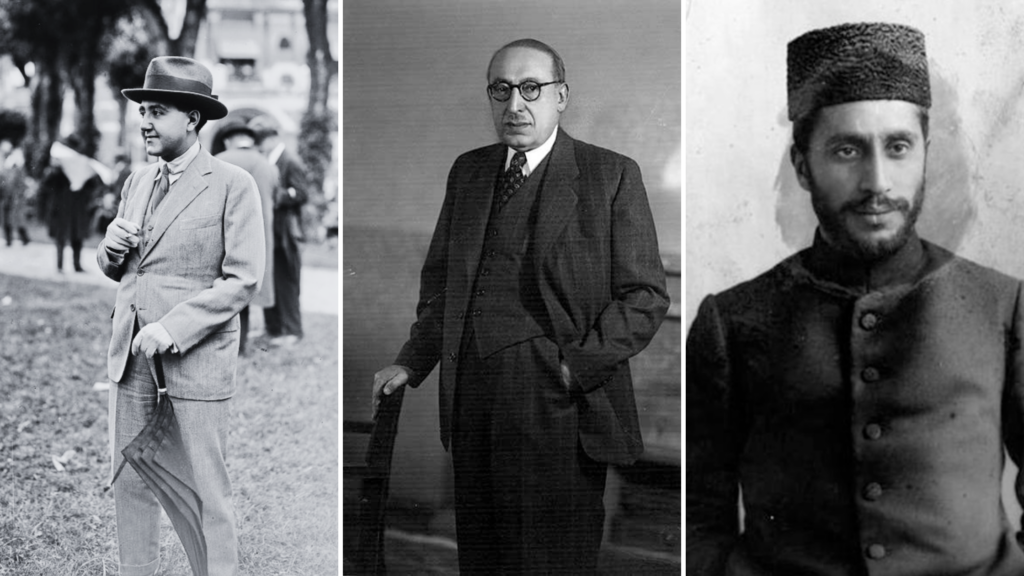
Though Moddares supported Reza Khan, he hoped that the return of these figures would revitalize Iran’s political landscape, forcing Reza Khan to share power with other players.
Reza Khan, aware of Moddares’ intentions, chose a cautious response. He told Moddares that while he would not actively assist in their return, they were free to come back whenever they wished, and he would not stand in their way.
Return of the King: Ahmad Shah Resurfaces
During this time, Ahmad Shah had begun to seriously consider his return to Iran. Especially after receiving a personal invitation from Sheikh Khaz’al, the tribal leader of Khuzestan.
As discussed in our special episode, Khaz’al ruled Khuzestan with complete autonomy, refusing to pay taxes to Reza Khan’s government. Frustrated by this defiance, Reza Khan sought to bring the sheikh under control. Khaz’al’s invitation was a strategic move to undermine Reza’s authority by restoring Ahmad Shah, who would likely support Khaz’al’s position in the province.
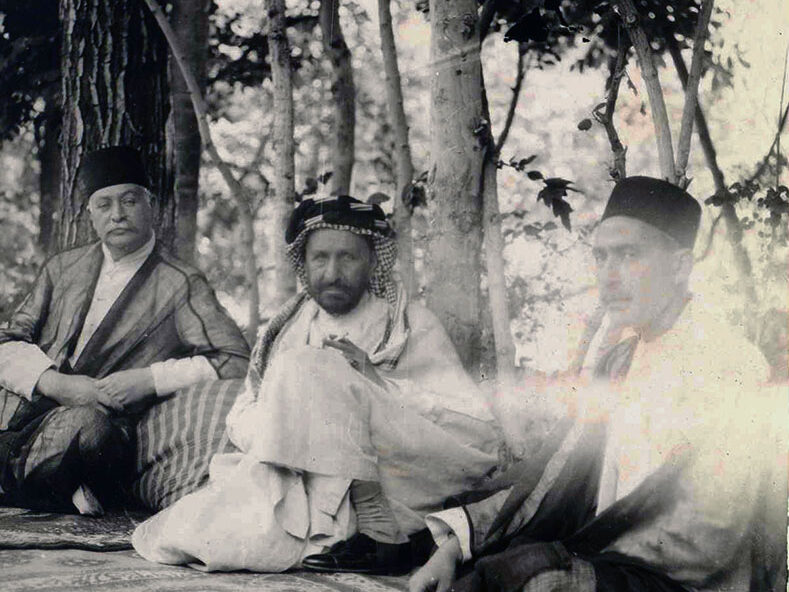
After consulting with his uncles and trusted advisors, Ahmad Shah informed his relatives in Tehran that he intended to return. In September 1925, he and his mother—banished years earlier alongside his father, Mohammad Ali Shah—booked their journey back to Iran.
In a personal telegram to Reza Khan, Ahmad Shah confirmed his plans:
“I will be leaving Paris via Bombay on October 2nd. I am pleased to return to my beloved country and look forward to meeting your excellency”
Reza Khan’s response was polite but measured. He acknowledged the news and asked about the Shah’s point of entry into the country.
However, behind the diplomatic tone, Reza Khan was far from pleased. He had hoped that with time, he could portray Ahmad Shah as a weak, indecisive ruler who had abandoned his people. But now, he was running out of time. He had to take things into his own hands.
Prime Minister vs. King: Reza Khan Stands Up Against Ahmad Shah
Shortly after receiving the telegram, Reza Khan orchestrated public demonstrations in Tabriz, the Qajar dynasty’s traditional stronghold. These protests were carefully staged to express the people’s contempt with the Shah and his family. It was to demonstrate their hate for the royal’s inaction, extravagant spending, and detachment from the hardships of ordinary citizens.
The protests soon spread to Rasht, Esfahan and Mashhad and their tone changed from aggression to hostility. The people didn’t want a change of behaviour, they wanted a change of monarchy.
With momentum on his side, Reza Khan knew it was time to act.
Reza Khan’s key to success relied on two factors:
First, he had to ensure that the neighbouring superpowers supported his actions or, at the very least, wouldn’t obstruct them. Second, he needed to move swiftly and decisively in the Majlis, preventing opposition members from forming a coalition against him.
Foreign Relations: Building a Coalition Against Qajars
On the first issue, he was in a good starting point.
The Soviets, who viewed the Qajar dynasty as relics of the Russian Empire, supported Reza Khan’s rise. In the west, Turkey—having replaced the Ottoman Empire—recognized that Reza Khan’s vision aligned closely with Atatürk’s reforms. Turkish newspapers began publishing articles in support of Reza Khan, launching an indirect propaganda campaign on his behalf.
The only uncertainty lay with the British.
Convincing the British
Reza Khan knew that Ahmad Shah’s wouldn’t have been announced without approval from the British. This meant that they still might have favoured the Qajar dynasty. To clarify their position, Reza Khan sent his foreign minister, Hassan Moshar, to meet with Percy Loraine, the British envoy to Iran.
On October 21, Moshar sat down with Loraine. The envoy admitted that while he had discussed Ahmad Shah’s return with the monarch, the British government had neither endorsed nor officially supported it. Loraine expressed concern about the idea of deposing a sitting king and suggested alternatives, such as allowing the Shah to return and expanding Reza Khan’s role, or perhaps installing the Shah’s brother, Mohammad Hassan Mirza, as a replacement.
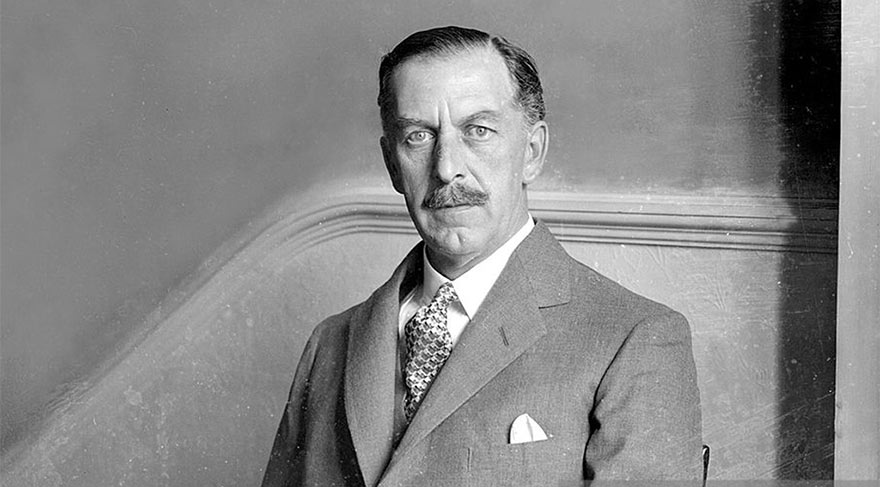
Moshar made it clear that Reza Khan had no intention of cooperating with the Qajars anymore. He firmly believed that as long as the dynasty remained in power, meaningful progress would be impossible.
Loraine asked for time to consult with his superiors. Two days later, on October 23, the British government issued a statement to the Iranian foreign office:
“His Majesty’s government have no wish to interfere in the internal affairs of another friendly country. These issues are capable of action only by the Persian people.”
This was as far as the British were willing to go. They would turn a blind eye to Reza Khan’s plans.
And for him… this was enough.
With the approval or at least non-disapproval of foreign powers, it was time to address the second challenge!
The Majlis Problem: Setting the Parliament Against the Shah
For Reza Khan, dealing with parliament was more complicated. His previous attempt at change had failed greatly thanks to the majlis and thus he had to be extra calculating in how he brought up the issue at the chamber.
But Reza had begun preparations for this scenario a long time ago. Ever since the election for the fifth parliament, he had made sure that through the military and his interior minister, the majority of candidates in support of him.
He had the support of the nationalists and progressives through his actions and the year-long propaganda to build his character and finally, Hassan Moddares, his only opposition was now on his side.
By the end of October, Reza khan introduced legislation that would abolish the Qajar dynasty once and for all.
This was a bold move by the prime minister. No such action had ever been attempted during the dynasty’s century-long reign, but Reza Khan was confident he could pull it off.
Vote of Abolishment: Ending The Qajar Dynasty
The vote was set for October 31, and most members of the Majlis already favoured the resolution. Still, Reza wasn’t going to leave anything to chance.
On the eve of the vote, he summoned the deputies to his residence for one-on-one meetings. There, he used his presence to personally persuade each representative to sign the document endorsing the legislation.
One by one, the deputies added their signatures, each pen stroke further sealing the fate of the Qajar dynasty.
Parliament Votes on the Resolution
On the day of the vote, Reza Khan ensured that the session reached a quorum by mobilizing military forces to guarantee enough members were present for the formal vote. He did allowed a few deputies—those known for their loyalty to the Qajars—to abstain from voting. Among them was Hassan Moddares, whose symbolic abstention served to show that opposition voices were not entirely silenced.
As the session began, Mohammad Taddayon, the newly elected president of the parliament, called the assembly to order. After the customary formalities, he presented the resolution to abolish the Qajar dynasty for discussion and vote.
While most members supported the resolution, four requested to speak against it. Among them was Mohammad Mossadeq, a prominent progressive representative and outspoken critic of Reza Khan. You may recall that, as Finance Minister under Qavam al-Saltaneh, Mossadeq had clashed with Reza Khan over the military budget and had also opposed the earlier push toward republicanism.
Mosadeq Opposes the Abolishment
In his speech, Mosadeq made an intricate argument. He started by acknowledging Reza Khan’s significant contributions to the country during his tenure as prime minister and commander-in-chief. But he cautioned that if the Qajar dynasty were abolished and Reza Khan became king, the constitution would require him to surrender the executive powers of the prime minister and focus solely on ceremonial royal duties. This, Mossadeq argued, would limit Reza Khan’s ability to deliver tangible results, weakening the practical governance that had benefited the nation so far.
Mosadiq implored Reza Khan to consider how productive the government and parliament had been in the past few years and to stay in his position to expand on this partnership and the benefits it had provided for the Iranians.
But Mossadeq’s argument carried a deeper warning. He implied that Iran’s existing constitutional monarchy, as it stood, did not grant the shah executive authority. If Reza Khan ascended the throne, Mossadeq feared, his inherently autocratic nature could transform the political system into a monopoly for the king. The separation of powers would erode, leaving both the executive and legislative branches powerless. Just as during the republicanism debate, Mossadeq was alerting his colleagues that concentrating authority in Reza Khan’s hands would dismantle the fragile balance of power that had been barely maintained, risking the future of Iran’s democracy.
Mossadeq knew that his remarks weren’t going to sway any votes or change any minds. The votes had already been cast. His speech was a symbolical protest. For now, that was all he could do.
The Fall of House Qajar
The four opposition members delivered their speeches and then left the chamber, abstaining from the vote.
After their departure, there were 80 representatives left. All voted for the dissolution of the Qajar dynasty.
“In the name of the welfare of the people of Iran, Parliament hereby declares the abolition of the Qajar Dynasty. It, within the bounds of the Constitution and other prevailing laws of Iran, entrusts the provisional government to Reza Khan. The determination of the form of the permanent government shall rest with the Constituent Assembly which shall be held for the purpose of amending articles 36, 37, 38 and 40 of the Constitution.”
In many ways, the fall of the Qajar dynasty seemed inevitable. King after king, their influence faded, consumed by greed and marked by incompetence. Year after year, the country drifted deeper into despair, its resources squandered, and its people disillusioned. It was only a matter of time before this dynasty, now at the end of its turn, would cease to exist.
What wasn’t so obvious was that a soldier from a humble background would be the one to deliver the final blow.
Reza Khan was shrewd and relentless. He knew how to make himself indispensable—whether as a member of the Cossack Brigade, Minister of War, or Prime Minister. In the ruthless world of Iranian politics, he mastered the art of survival by cultivating both fear and respect.
Now, this soldier-turned-prime minister was poised to become the next king of Persia.

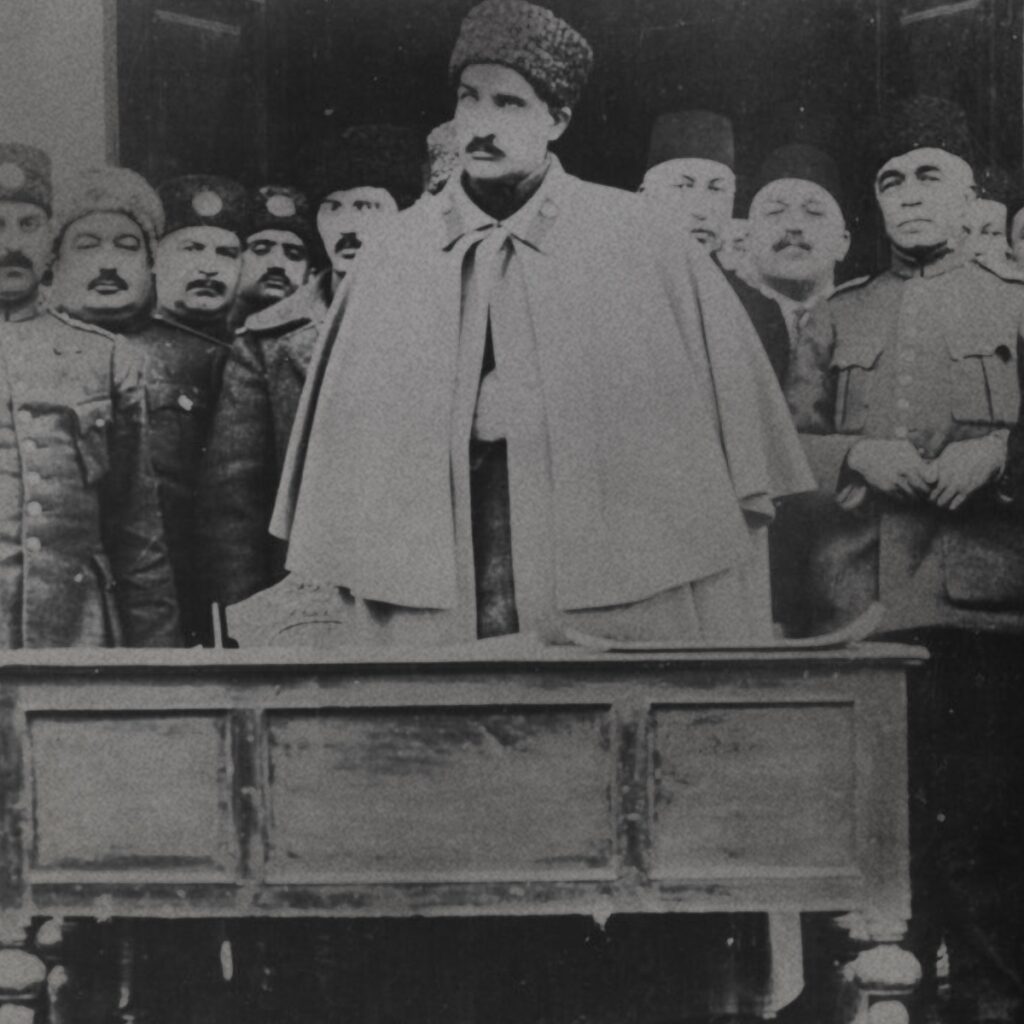



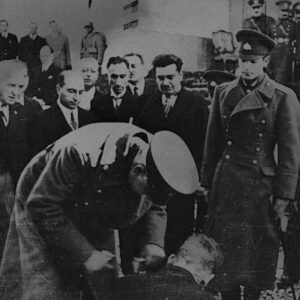
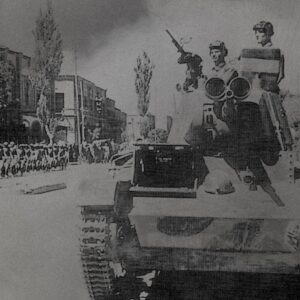
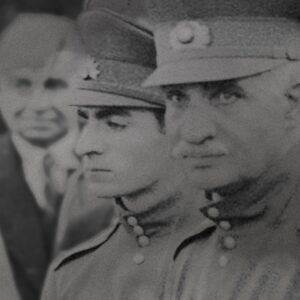
4 Responses